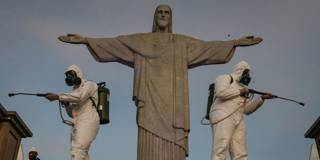If Latin America’s COVID-19 public-health shock is followed by a protracted economic crisis that leaves many people behind, trust in government and institutions will suffer, and politics will become even more fractured. In that case, the region could yet face a pandemic of instability and hopelessness.
BOGOTÁ/BUENOS AIRES/LONDON – Many regions performed badly when confronted with COVID-19, but Latin America fared worse than most, in terms of both lives and livelihoods lost. As of November 2020, nine of the 20 countries with the highest number of COVID-19 deaths per capita were in Latin America. The International Monetary Fund expected the region’s output to drop by 8.1% in 2020, with only the eurozone suffering a bigger regional decline. As a result, almost 15 million more Latin Americans will live in extreme poverty.

BOGOTÁ/BUENOS AIRES/LONDON – Many regions performed badly when confronted with COVID-19, but Latin America fared worse than most, in terms of both lives and livelihoods lost. As of November 2020, nine of the 20 countries with the highest number of COVID-19 deaths per capita were in Latin America. The International Monetary Fund expected the region’s output to drop by 8.1% in 2020, with only the eurozone suffering a bigger regional decline. As a result, almost 15 million more Latin Americans will live in extreme poverty.